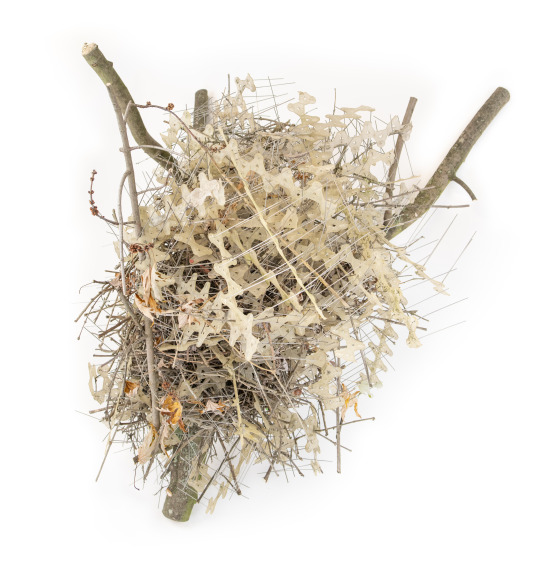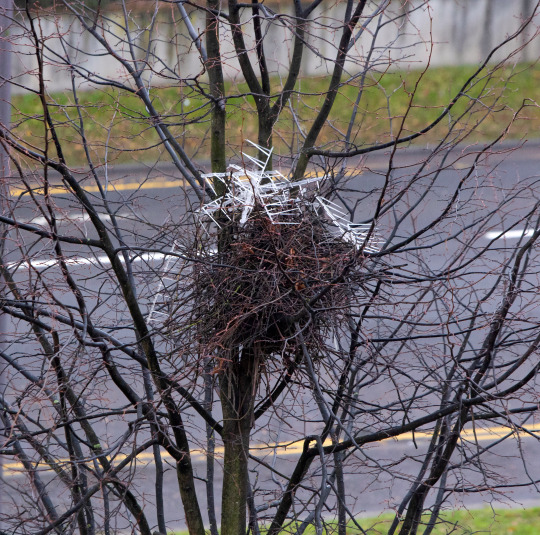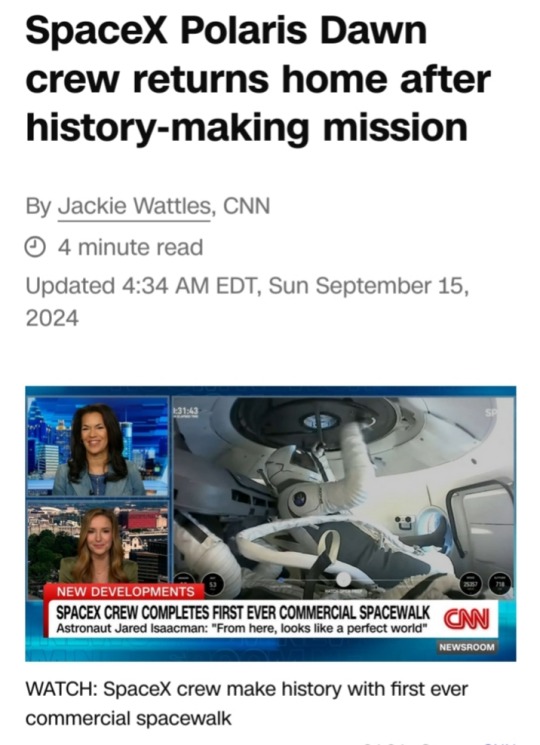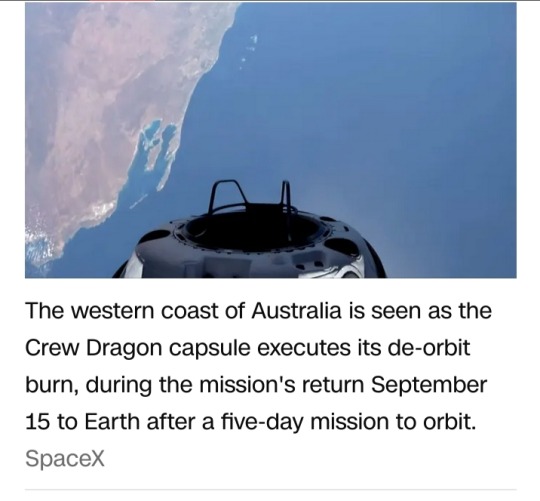#Adaptability and resilience
Explore tagged Tumblr posts
Text
The Philosophy of Producers
The philosophy of producers pertains to the principles, values, and ethical considerations guiding the actions and decisions of individuals or entities engaged in production, manufacturing, or creation of goods and services. It encompasses various aspects, including economic theory, business ethics, labor relations, and social responsibility. Here are some key elements of the philosophy of producers:
Economic Rationality: Producers operate within economic frameworks aimed at maximizing efficiency, profitability, and resource allocation. Economic theories such as supply and demand, cost-benefit analysis, and economies of scale influence producers' decisions regarding production levels, pricing strategies, and investment decisions.
Innovation and Creativity: Producers often strive for innovation and creativity in product design, manufacturing processes, and marketing strategies. The philosophy of producers emphasizes the importance of fostering a culture of innovation to stay competitive, meet evolving consumer needs, and drive growth and progress in society.
Ethical Conduct: Producers are expected to adhere to ethical standards in their business practices, including fair treatment of workers, responsible sourcing of materials, and transparent communication with stakeholders. Ethical considerations such as corporate social responsibility, environmental sustainability, and respect for human rights shape producers' decisions and behaviors.
Quality and Excellence: Producers are committed to delivering high-quality products and services that meet or exceed customer expectations. The philosophy of producers emphasizes the pursuit of excellence in craftsmanship, product performance, and customer satisfaction as essential elements of long-term success and reputation building.
Collaboration and Partnership: Producers often collaborate with suppliers, distributors, and other stakeholders in their value chain to achieve mutual goals and create value for all parties involved. The philosophy of producers values cooperation, partnership, and shared success as essential drivers of sustainable business relationships and industry innovation.
Adaptability and Resilience: Producers must adapt to changing market conditions, technological advancements, and competitive pressures to remain viable and resilient over time. The philosophy of producers emphasizes flexibility, agility, and the ability to embrace change as critical attributes for long-term survival and growth in dynamic business environments.
Social Impact: Producers recognize their role and responsibility in contributing to the well-being of society beyond their economic activities. The philosophy of producers includes considerations of social impact, community engagement, and philanthropy to address societal challenges, promote social equity, and foster positive change.
Overall, the philosophy of producers encompasses a broad range of principles and values that guide their actions, decisions, and interactions within the economic, social, and ethical dimensions of their operations.
#philosophy#epistemology#knowledge#learning#chatgpt#education#ethics#Economic rationality#Innovation and creativity#Ethical conduct#Quality and excellence#Collaboration and partnership#Adaptability and resilience#Social impact#Business ethics#Corporate social responsibility#Sustainable production#economics#economic theory#producers
0 notes
Text
https://www.xcrino.com/gym-management-software-in-delhi-ncr-india
Smart Gym Management Documentation by Xcrino
Smart Gym Management Documentation by Xcrino is a comprehensive guide that provides detailed information on how to effectively manage a gym or fitness center using the Xcrino gym management software. This documentation covers various aspects of gym management, including member management, sales and marketing, financial management, and facility management.
#Software#sales and marketing#financial management#facility management#staff training and development#group fitness and personal training#data and analytics#customer relationship management#social media and online presence#strategic partnerships and collaborations#branding and messaging#technology and innovation#adaptability and resilience
0 notes
Text
movie sonic really misses the mark on so many levels, but the fact he gave into vengeance is perhaps the most egregious
#reminder that i am not wrong or unreasonable for wanting a faithful adaptation#sonic uses the positive energy of the chaos emeralds in SA1 as a *direct contrast* to perfect chaos#who was acting out in rage and vengeance and using the negative energy of the chaos emeralds#sonic is completely emotionally unaffected by dark gaia's negative energy#he has superhuman mental resilience#come on man lol#sonic movie 3 spoilers
165 notes
·
View notes
Text
Humans are so cute. They think they can outsmart birds. They place nasty metal spikes on rooftops and ledges to prevent birds from nesting there.
It’s a classic human trick known in urban design as “evil architecture”: designing a place in a way that’s meant to deter others. Think of the city benches you see segmented by bars to stop homeless people sleeping there.
But birds are genius rebels. Not only are they undeterred by evil architecture, they actually use it to their advantage, according to a new Dutch study published in the journal Deinsea.
Crows and magpies, it turns out, are learning to rip strips of anti-bird spikes off of buildings and use them to build their nests. It’s an incredible addition to the growing body of evidence about the intelligence of birds, so wrongly maligned as stupid that “bird-brained” is still commonly used as an insult...
Magpies also use anti-bird spikes for their nests. In 2021, a hospital patient in Antwerp, Belgium, looked out the window and noticed a huge magpie’s nest in a tree in the courtyard. Biologist Auke-Florian Hiemstra of Leiden-based Naturalis Biodiversity Center, one of the study’s authors, went to collect the nest and found that it was made out of 50 meters of anti-bird strips, containing no fewer than 1,500 metal spikes.
Hiemstra describes the magpie nest as “an impregnable fortress.”

Pictured: A huge magpie nest made out of 1,500 metal spikes.
Magpies are known to build roofs over their nests to prevent other birds from stealing their eggs and young. Usually, they scrounge around in nature for thorny plants or spiky branches to form the roof. But city birds don’t need to search for the perfect branch — they can just use the anti-bird spikes that humans have so kindly put at their disposal.
“The magpies appear to be using the pins exactly the same way we do: to keep other birds away from their nest,” Hiemstra said.
Another urban magpie nest, this one from Scotland, really shows off the roof-building tactic:

Pictured: A nest from Scotland shows how urban magpies are using anti-bird spikes to construct a roof meant to protect their young and eggs from predators.
Birds had already been spotted using upward-pointing anti-bird spikes as foundations for nests. In 2016, the so-called Parkdale Pigeon became Twitter-famous for refusing to give up when humans removed her first nest and installed spikes on her chosen nesting site, the top of an LCD monitor on a subway platform in Melbourne. The avian architect rebelled and built an even better home there, using the spikes as a foundation to hold her nest more securely in place.
...Hiemstra’s study is the first to show that birds, adapting to city life, are learning to seek out and use our anti-bird spikes as their nesting material. Pretty badass, right?
The genius of birds — and other animals we underestimate
It’s a well-established fact that many bird species are highly intelligent. Members of the corvid family, which includes crows and magpies, are especially renowned for their smarts. Crows can solve complex puzzles, while magpies can pass the “mirror test” — the classic test that scientists use to determine if a species is self-aware.
Studies show that some birds have evolved cognitive skills similar to our own: They have amazing memories, remembering for months the thousands of different hiding places where they’ve stashed seeds, and they use their own experiences to predict the behavior of other birds, suggesting they’ve got some theory of mind.
And, as author Jennifer Ackerman details in The Genius of Birds, birds are brilliant at using tools. Black palm cockatoos use twigs as drumsticks, tapping out a beat on a tree trunk to get a female’s attention. Jays use sticks as spears to attack other birds...
Birds have also been known to use human tools to their advantage. When carrion crows want to crack a walnut, for example, they position the nut on a busy road, wait for a passing car to crush the shell, then swoop down to collect the nut and eat it. This behavior has been recorded several times in Japanese crows.
But what’s unique about Hiemstra’s study is that it shows birds using human tools, specifically designed to thwart birds’ plans, in order to thwart our plans instead. We humans try to keep birds away with spikes, and the birds — ingenious rebels that they are — retort: Thanks, humans!
-via Vox, July 26, 2023
#birds are literally learning how to better live/survive alongside us#this is like. actually kind of remarkable. and the technique is spreading including to other species.#is this hopepunk? it kinda feels like hopepunk to me.#animals are literally learning how to use our attempts to get rid of them against us#that's kind of amazing#and also VERY encouraging re: life's innate resilience#crows#magpie#corvid#crow#bird#bird nest#bird nerd#bird news#adaptation#urban animals#ornithology#climate adaptation#kinda#good news#hope#hope posting#hopepunk#animal intelligence#wildlife#animals are awesome
1K notes
·
View notes
Text
Quick question for the Touchstarved fandom!! As much as we love Ais calling us 'Sparrow,' I have to ask - if you had to decide, what other bird nickname do you think he would call you/your MC? :O
For example, Ais would my Unnamed MC Daniella 'bluebird,' while he'd call my Alchemist MC Edgar 'crow' (and another OC I'm planning, Shinju, 'woodpecker!')
#Ais calling Mhin 'that dove' has made something click in my brain and I had to ask this orz#Ngl it made me wonder- Does Ais base his bird nicknames off of appearance or personality?? Or both?? Or something else??#Doves mean peace and pacifism and uh *looks at Mhin* Peace and love to them but they don't exactly remind me of either of those- Mhin's hai#has the same color as doves though so that makes me think back to appearances.. But maybe peace is something that Mhin yearns for? Idk#Sparrows mean resilience; adaptability; joy; and freedom- I remember someone saying that freedom is something that Ais wants due to Ocudeus#But also that sparrows are one of the most common birds in the world- So to Ais (at least at first) you're just another face to him#and he tries to distance himself from you by calling you a common bird. I'm not sure where I'm going with this but it's probably something-#I personally like to think Ais's nicknames are a combination of personality+appearance but I could be very VERY wrong DKLSFJNS /lh#Tbh I doubt Ais is super focused on the deeper meaning of his nicknames (since he gave us our sparrow nickname upon his first impression)#But still!! This is just for fun- For my OCs let's start with Shinju - woodpeckers represent determination; communication; and opportunitie#Since he's a merchant these qualities are pretty fitting (still haven't come up w/ a solid design just yet but I'm trying to cook orz /lh)#As for Edgar crows mean death and the afterlife which KIND OF links to his scientific hypothesis?? (though Ais doesn't know about it)#But crows also mean intelligence; transformation; and wisdom which links to him being a scientist+alchemist.#Or Ais just calls him that because he has black hair LJSNDF /lh#As for Daniella bluebirds mean joy; hope; and renewal/growth which are pretty fitting for her#But Ais could just be calling her that since she wears a lot of blue lksjdlala- /lh (*cough* And also- *cough)#(I read that bluebirds are also supposed to be 'harbingers of happiness' which could be a cute little thing if Daniella goes down his route#touchstarved#touchstarved game#touchstarved ais#ais#touchstarved mc#touchstarved oc#Scream Posts For: Touchstarved#touchstarved daniella#daniella#touchstarved edgar#edgar#touchstarved shinju#shinju
71 notes
·
View notes
Text
04.10.2025-Story by Marina Wang
In 1992, Hurricane Andrew, one of the most devastating tropical cyclones in U.S. history, ravaged Elliott Key, Florida. “Most of the island was covered in seawater, and about a quarter of the trees were either toppled or completely broken,” says Sarah Steele Cabrera, a biologist at the University of Florida. “There was not a leaf to be seen.”
At the time, conservationists fretted that the enormous hurricane was going to wipe out the last of the island’s Schaus’ swallowtails (Papilio aristodemus), a species of endangered black-and-yellow butterfly native to southern Florida and now found only on Elliott Key and nearby Key Largo. And the butterfly’s numbers on the island did take an initial hit from the storm. But only four years later, much to scientists’ surprise, the population jumped dramatically. Now, a 36-year-long dataset shows that Schaus’ swallowtails saw similar post-hurricane population bumps after two subsequent hurricanes: Wilma in 2005 and Irma in 2017.
In 1976, the Schaus’ swallowtail butterfly became one of the first insects to be listed under the U.S. Endangered Species Act, Cabrera says. This critically endangered butterfly prefers higher-elevation hammock forests with a mix of standing trees and grassland—a habitat that also happens to be prime real estate in the Florida Keys. The butterfly’s numbers on Elliott Key hit an all-time low in 2007, just two years after Hurricane Wilma, with an estimated 56 individuals remaining. But the most recent estimate from 2021 shows the island’s population sitting at a slightly more comfortable 4,400 or so.
While it seems counterintuitive, the dataset suggests that hurricanes are partly responsible for the butterfly’s current spike in population. To make sense of the recurring post-hurricane peaks, Cabrera and colleagues analyzed how butterfly numbers varied with precipitation, wind speed, temperature, and other meteorological variables.
When a hurricane first makes landfall, Cabrera says, the storm’s high winds kill many adult butterflies, while its surges of salty ocean water drown many caterpillars. In the immediate storm’s aftermath, both butterflies and caterpillars have fewer flowers or leaves to feed on. But as the damage fades and the years march on, toppled trees and downed branches create gaps in the canopy that let light penetrate to the forest floor. With more space and light, understory plants flourish, bringing fresh greenery for caterpillars and blooming flowers for butterflies.
“Hurricanes are natural disturbance events that shape population dynamics in ways that we are only just beginning to understand,” Cabrera says.
Jess Zimmerman, an ecologist at the University of Puerto Rico who was not involved in the study, says the nearly four decades of observations that went into this research offer the perspective of a wide-angle lens, yielding much more insight into the butterfly’s long-term crests and troughs than a narrower dataset could provide. As a result, he says, scientists are now more confident that the Schaus’ swallowtail population has remained fairly stable over the long term, despite high year-to-year volatility.
In general, Zimmerman says, animals that evolved in areas prone to disturbance are adapted to handle those variables. Schaus’ swallowtails, like many of the insects that Zimmerman studies, have many offspring and their populations can balloon under the right conditions. “They have ways of making it through these disturbances without getting lost,” he says.
#good news#butterflies#swallowtail butterfly#endangered insects#endangered species#science#environment#environmentalism#nature#animals#conservation#usa#hurricanes#resilience#resiliency#entomology#adaptation#ecology
44 notes
·
View notes
Quote
Do you want a level of income to fit your lifestyle or a lifestyle to fit your income level?
Miles Anthony Smith, Becoming Generation Flux: Why Traditional Career Planning is Dead: How to be Agile, Adapt to Ambiguity, and Develop Resilience
#quotes#Miles Anthony Smith#Becoming Generation Flux: Why Traditional Career Planning is Dead: How to be Agile#Adapt to Ambiguity#and Develop Resilience#thepersonalwords#literature#life quotes#prose#lit#spilled ink#career-advice#career-counseling#career-development#career-path#career-quotes#generation-gap#generation-x#generation-y#job-interview#job-interviews#job-search#job-seeking#jobless
19 notes
·
View notes
Text
The stronger we are relative to others, the less willing we generally are to change. We see strength as an immediate advantage that we don’t want to compromise. However, it’s not strength that survives, but adaptability. Strength becomes rigidity.
Shane Parrish, The Great Mental Models, Volume 2: Physics, Chemistry and Biology
12 notes
·
View notes
Text

Inspire, lead, and motivate. Accept your true authentic self unapologetically. Be willing to own your truth, even if it is not the norm, and goes against the grain. Embrace your positive and negative aspects, as they are all part of your divine mission to evolve and grow.
Elisabeth Babarci
#Empowerment#Empower#Motivation#Motivate#Inspiration#Inspire#Leadership#Leaders#Leader#Courage#Brave#Trust#Truth#Faith#Spiritual#Evolve#Grow#Life#Peace#Lifestyle#Mindfulness#Mindful#Quote#Quotes#Wisdom#Advice#Lessons#Lesson#Adaptable#Resilient
10 notes
·
View notes
Text
The Philosophy of the Cat
The philosophy of the cat is a playful and contemplative exploration of feline behavior, cognition, and their role in human life and culture. While cats do not engage in philosophical inquiry in the same way humans do, their enigmatic nature and unique characteristics have inspired philosophical reflections on various aspects of existence. Here are some key themes and perspectives within the philosophy of the cat:
Independence and Autonomy: Cats are often celebrated for their independence and self-sufficiency. Philosophical discussions on cat behavior may delve into the nature of autonomy and the balance between freedom and interdependence in human-animal relationships.
Hedonism and Enjoyment of Life: Cats are known for their love of leisure, play, and relaxation. Philosophical interpretations of cat behavior may emphasize the pursuit of pleasure, the importance of enjoying the present moment, and the value of simplicity and contentment.
Intuition and Instinct: Cats exhibit keen senses, intuition, and instincts that guide their actions and interactions with the world. Philosophical reflections on feline cognition may explore the nature of intuition, animal consciousness, and the limits of human understanding.
Mystery and Elusiveness: Cats possess an aura of mystery and unpredictability that has captivated human imagination for centuries. Philosophical musings on the enigmatic nature of cats may touch upon themes of uncertainty, ambiguity, and the unknowable aspects of existence.
Aesthetic Appreciation: Cats are admired for their grace, elegance, and beauty. Philosophical discussions on the philosophy of aesthetics may contemplate the aesthetic value of cats, the perception of beauty in nature, and the role of aesthetics in shaping human perceptions of the world.
Symbolism and Cultural Significance: Cats have held symbolic significance in various cultures and mythologies throughout history. Philosophical inquiries into the symbolism of cats may explore themes of mysticism, spirituality, and the symbolic meanings attributed to animals in human culture.
Coexistence and Interconnectedness: Cats share a symbiotic relationship with humans, often serving as companions, protectors, or sources of comfort. Philosophical reflections on the human-cat bond may touch upon themes of coexistence, interspecies communication, and the ethical responsibilities of pet ownership.
Adaptability and Resilience: Cats are highly adaptable creatures capable of thriving in diverse environments. Philosophical discussions on cat resilience may examine the concept of resilience, coping mechanisms in the face of adversity, and the capacity for growth and transformation.
In summary, the philosophy of the cat offers a lighthearted and contemplative exploration of the multifaceted nature of feline existence. While cats may not engage in philosophical inquiry in the traditional sense, their presence and behavior inspire reflections on autonomy, enjoyment of life, intuition, mystery, aesthetics, symbolism, coexistence, resilience, and more.
#philosophy#epistemology#knowledge#learning#chatgpt#education#metaphysics#Autonomy#Hedonism#Intuition#Mystery#Aesthetics#Symbolism#Coexistence#Adaptability#Resilience#Animal consciousness#Human-animal bond#Cultural symbolism#Mysticism#Ambiguity#Enjoyment of leisure#cat#feline
15 notes
·
View notes
Text

#changingplans#acceptance#lettinggo#newbeginnings#flexibility#adaptability#resilience#growth#healing#self-discovery#self-love#self-compassion#trustingtheprocess#mentalhealth#emotionalhealth#wellbeing#happiness#joy#peace#gratitude#appreciation#selfcare#personalgrowth#spirituality#purpose
39 notes
·
View notes
Text
"Do what you can, with what you have, where you are." – Theodore Roosevelt
#theodore roosevelt#practical wisdom#inspiration#motivational quotes#resilience#life lessons#adaptability#timeless wisdom#making it work#self-reliance#positivity#personal growth#courage#achieving goals#transformative ideas#success mindset#hard work#words to live by#iconic quotes#determination#leadership#american history#self-discipline#achieve greatness#pragmatic thinking#perseverance#self-awareness#inner strength#courage and strength#mental clarity
4 notes
·
View notes
Text










The remainder of the crew’s time in orbit was spent carrying out nearly 40 science experiments and research, including some that sought to better understand space adaptation syndrome — a type of microgravity-specific motion sickness.
Gillis, a trained violinist, also brought her instrument along for the mission and delivered a rendition of “Rey’s Theme” from “Star Wars: The Force Awakens.”
Gillis’ music was sent back to Earth using SpaceX’s Starlink as a test of the satellite network’s potential to provide in-space connectivity.
Menon also took time to read a book she coauthored — called “Kisses From Space” — to her family as well as a group of patients from St. Jude Children’s Hospital as part of a fundraiser.
Sunday’s anticipated return marks the conclusion of the third trip to space for the specific Crew Dragon capsule powering the Polaris Dawn mission.
The spacecraft — named “Resilience” by the NASA astronauts onboard its first trip to space in November 2020 called (Crew-1) — flew the 2021 Inspiration 4 mission.
That trip, also funded by Isaacman, saw him and three crewmates circle Earth for three days as part of a fundraiser for childhood cancer research.
#SpaceX#Polaris Dawn#first commercial spacewalk#spacewalk#Crew Dragon#de-orbit burn#spacecraft#Jared Isaacman#Shift4Payments#Scott Poteet#Anna Menon#Sarah Gillis#altitude record#apogee#EVA#extravehicular activity#EVA suits#space adaptation syndrome#motion sickness#Starlink#in-space connectivity#Kisses From Space#Rey’s Theme#Star Wars: The Force Awakens#St. Jude Children’s Hospital#Resilience#Crew-1#Inspiration 4#fundraiser#cancer research
5 notes
·
View notes
Text
The study, published in Ecology and Evolution, explores forests that experience "cold-air pooling," a phenomenon where cold air at higher elevations drains down into lower-lying valleys, reversing the expected temperatures—warm at the bottom, cold at the top—that typically occurs in mountainous areas. That is, the air temperature drops with descent from mountain to valley.
"With temperature inversions, we also see vegetation inversions," says lead study author and former UVM postdoctoral researcher Melissa Pastore. "Instead of finding more cold-preferring species like spruce and fir at high elevations, we found them in lower elevations—just the opposite of what we expect."
And the effect on these ecosystems is substantial: "This cold-air pooling is fundamentally structuring the forest," says study co-author and UVM professor Carol Adair.
This insight "can help forest managers prioritize and protect areas with frequent and strong cold-air pooling to preserve cold-loving species as the climate warms," says Adair.
The researchers looked at three forested sites in New England, ranging from the shallow, crater-like Nulhegan Basin of Vermont's Northeast Kingdom, to the higher peaks and deeper valleys of the Green Mountains, over two years. They collected data on the types of trees present across elevation transects and monitored temperature hourly.
The researchers found that, far from being the occasional nighttime, seasonal phenomenon it's historically been thought to be, cold-air pooling happens frequently, year-round, well into daylight hours, Adair says. The phenomenon occurred at every site they studied, but was strongest at the site with the shallowest elevation change.
Refuge in a changing climate
Locations experiencing this phenomenon might prove essential to conservation efforts aimed at preserving cold-adapted species, even as the larger climate warms, Pastore notes. "These cold-air-pooling areas could be valuable targets for small areas that provide a refuge from climate change; they're areas that might be buffered from, or even decoupled from, climate change, and they're harboring cold-adapted species that we know are vulnerable."
She adds that conserving such locations may provide enough time for species to adapt to climate change by either migrating, or by mixing genes with neighbors to assume traits needed for survival in a hotter world.
In this way, Pastore says, "These pockets of cold habitat can act as steppingstones for some species—can buy them that time."
Conserving such locations may have practical applications, as well, says Adair, "including carbon storage and small-scale recreational opportunities," adding that cold-loving coniferous tree communities tend to store more carbon than deciduous trees, and forest soils may also hold onto moisture longer—important during periods of extreme rain.
Cold-air pooling has been historically and anecdotally observed elsewhere, Adair says, but this study is the first to quantify it to this degree across many sites beneath the forest canopy, and more research is planned to explore its temporal and geographic extent.
Cold-air pooling is not a panacea, Pastore warns. These forests are "still going to warm—I definitely don't want to say these are complete safe havens, because climate change will happen there, too—but it might be slower, and maybe species that might otherwise disappear in a warmer climate will remain longer in these locations."
The research is highly relevant in a changing climate, as ecologists seek to model what may happen to species that require cold conditions. "If you don't have this process in your model," Adair says, "you're going to miss that there are these areas where cold-loving species can persist and are persisting."
The work has been a hopeful change of pace, Adair says. "I'm excited about the fact that this is good news, in a way. These areas can help cold-adapted species persist." She adds, "A lot of my research is telling people why bad things are happening, so this is nice. It's not all good news, but it's some good news. These places exist. We can use them. They're important. They're clearly structuring forests."
#good news#global climate change#climate crisis#environmentalism#science#environment#forests#climate resilience#nature#conservation#climate change#animals#cold forests#climate change adaptation#climate change resiliency
31 notes
·
View notes
Note
I'm so sorry you have to go to uni on a saturday :( anyway I don't know any of your ocs but let's just say uh 7, 10, and 20 for eli?
7. Describe them in three words. Now let them describe themself in three words.
me: impulsive, full of love!! (not one word but its the vibe..), malleable (ahem..)
eli: emotional (slash neg), funny (trait he leans the most on), resilient (AHEM)
10. What age do they most want to be right now?
i think he idealizes Being 18. he wants to be grown up so bad !! he wants to feel like he can control things like he can actually Do Something instead of just leaning on other people always
20. What do they like that nobody else does?
not like. nobody else in the WORLD but i mean he is diametrically opposed to mariam in that he LOVES bugs he loves creatures that people find disgusting (full of love!!! like i said)
#asks#close the door#hi el :3 thanks for the condolences today sucked a little bit but we ball#he says resilient because hes good at adapting to Situations i say malleable#because he's Too Good at changing himself to fit Situations
5 notes
·
View notes
Text

In 1936, amid the hardships of the Great Depression in the United States, photographer Russell Lee captured a poignant moment: Christmas dinner at Earl Pauley’s home near Smithland, Iowa. The modest meal—potatoes, cabbage, and pie—spoke volumes about the economic struggles of the era.
This image prompts us to reflect on the resilience of past generations. At a time when widespread unemployment and scarce resources defined daily life, families had to make do with the bare essentials. Staples like potatoes and cabbage became dietary mainstays, and the idea of abundance was a distant dream.
Today, we enjoy an era of comfort and convenience. Supermarkets offer an endless selection of global products, modern appliances simplify cooking, and technology provides instant access to recipes and culinary techniques. Yet, when we look at photographs like Lee’s, we are reminded of the strength and adaptability of those who came before us.
Their experiences serve as a powerful reminder to appreciate what we have. The struggles of previous generations highlight the value of the opportunities and comforts we often take for granted. By recognising their perseverance, we cultivate gratitude and a deeper awareness of the significance of each achievement in our own lives.
#history#great depression#resilience#perseverance#christmas#historical photo#russell lee#gratitude#reflections#simple life#food#legacy#challenges#adaptability#family#memory
2 notes
·
View notes